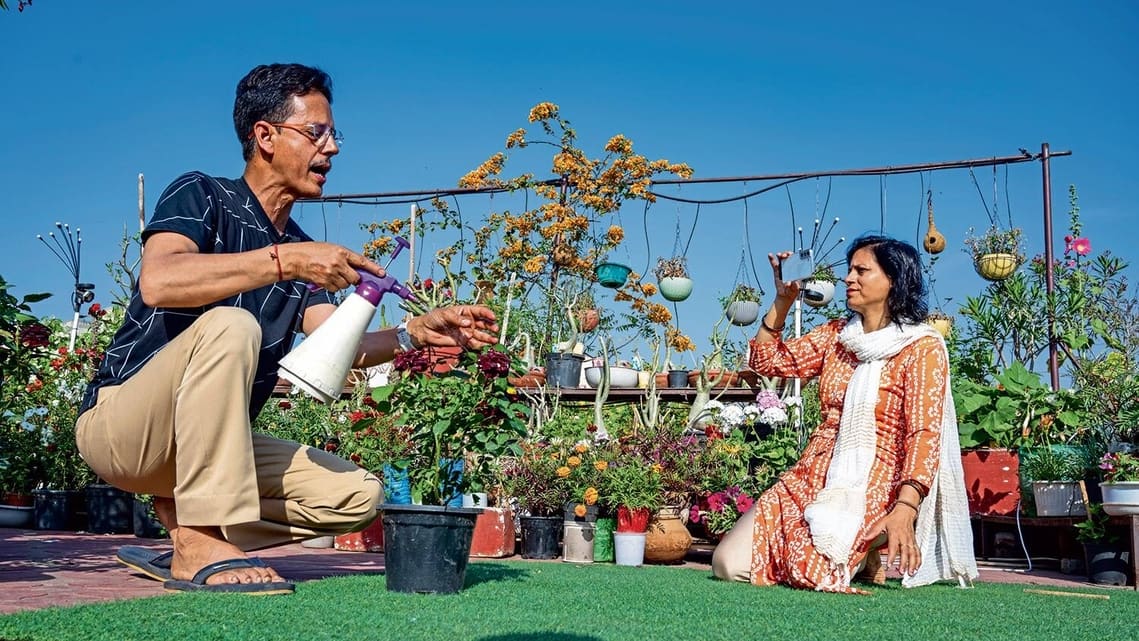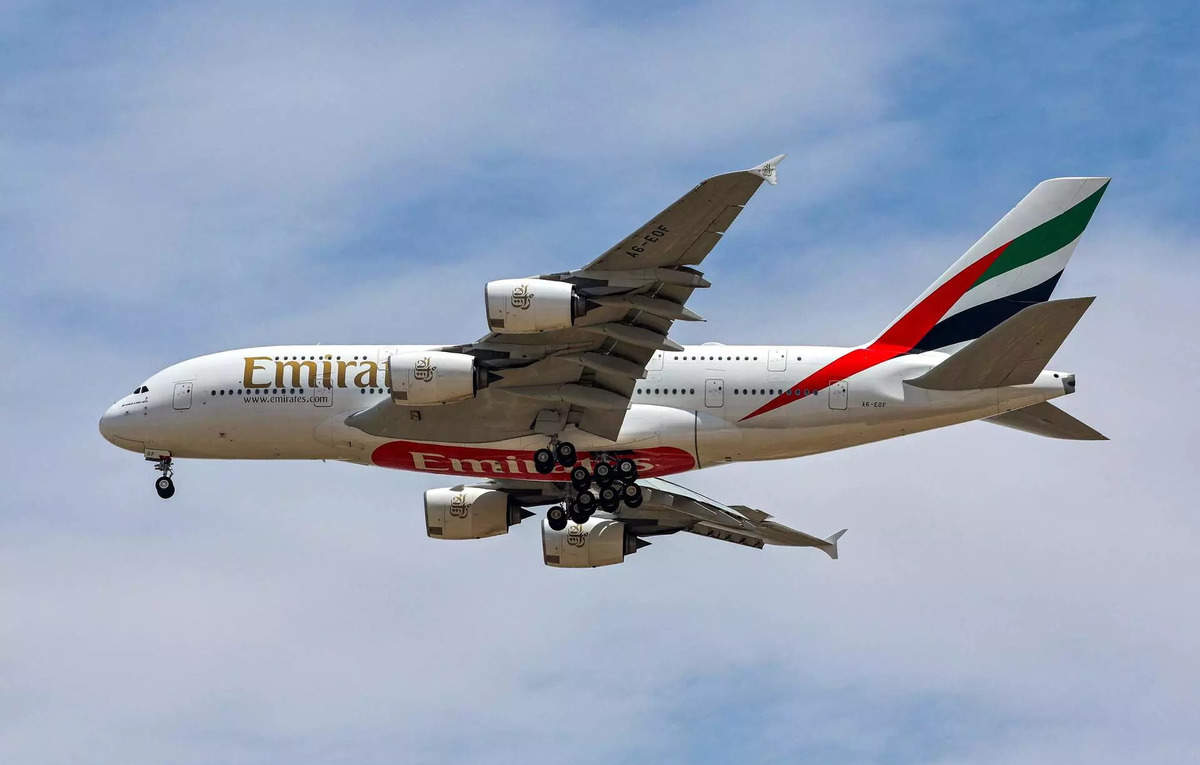Benefits of Industrial Storage Bins
Modern capacity receptacles are substantial holders explicitly intended for modern and business stockpiling applications. They are worked to endure requesting conditions, weighty loads, and unpleasant taking care of.
Modern plastic storage boxes Advantages
Current limit holders, otherwise called high-limit compartments, are huge steel trailers intended to oblige a higher volume of freight or products. These holders are utilized in different enterprises for moving and putting away bigger amounts of products effectively. A portion of the fundamental advantages of modern stockpiling receptacles include:
Disposing of Messiness IN THE Working environment: Having a complicated working environment can fundamentally bring down your representative efficiency levels, as they should rival mess for accessible table or work area. Using modern plastic storage boxes can assist you with taking out mess, while likewise permitting simple admittance to things when required.
KEEPING Hardware Coordinated: Modern capacity canisters won’t just assist you with coordinating your work area yet in addition make it simpler for representatives to find the things they need promptly. Prior to fixing your racks with modern capacity receptacles, try to obviously mark them with the name of the things they contain. This way a worker will actually want to rapidly find the thing they need, and they will actually want to return the thing to its appropriate spot when they are done with it.
Expanding Working environment Efficiency: Having a conveniently coordinated work area can likewise assist with expanding working environment efficiency, as representatives will at this point not sit around searching for the things they need. By putting your modern stockpiling receptacles in a helpful area, you can likewise eliminate the time spent recovering things from the plastic storage boxes .
Further developing Worker Wellbeing: Not exclusively can cleaning and putting together your work area assist with expanding efficiency and proficiency in the working environment, it can likewise assist with establishing a more secure work space for your representatives. Utilizing modern capacity receptacles can assist with keeping your hardware and supplies far removed, keeping workers from stumbling and falling on a free thing.
MAKING IT Simpler TO CLEAN THE Working environment: Having the entirety of your gear and different things put away in modern plastic storage boxes can assist with making your work area more straightforward to clean. Representatives can just move the receptacles far removed while they are cleaning and afterward get the plastic storage boxes once again to their customary put on the rack whenever they are finished.
The Double Declining Balance Depreciation Method
Companies can acquire assets in one of two ways: utilizing its own capital, or getting assets from an outsider. The level of risk and the company’s financial future are affected by the ratio of owned and borrowed assets. It merits getting comfortable with a significant bookkeeping method that works on this interaction: the ratio of debt to assets.
A leverage ratio known as the debt to asset ratio shows how much of a company’s assets are funded by debt. For evaluating financial risk, it is extremely helpful. An organization that claims a greater amount of its possessions is in a safer situation than an organization that is overleveraged. A higher debt-to-asset ratio indicates to analysts, investors, and creditors that the riskier company may become insolvent or no longer be able to meet its obligations.
The debt to asset ratio is calculated by accountants to provide information to investors, analysts, creditors, and management. It forecasts a company’s future solvency and provides a useful overview of how it has grown and acquired its holdings over time. The debt to asset ratio is used by creditors to determine a company’s liability, its ability to repay debts, and whether or not it will receive additional loans.
Investors, on the other hand, rely on the debt to asset ratio to determine whether a company is financially stable and able to return on investments. Understanding the debt to asset ratio and why it is such an important step in the accounting level 3 course accounting process would be beneficial to business owners who want to expand their financing options rather than being passed over by wary investors and creditors.
How to Calculate the Debt to Asset Ratio Calculating the debt to asset ratio is not particularly difficult. We just separation complete liabilities by the organization’s all out resources. For instance, assume we own an organization that has complete possessions of $101,000 and all out liabilities of $16,000. We simply divide $16,000 by $101,000 using the formula. The debt-to-assets ratio is 1584, or 15.84 percent.
Deciphering Results
Since we have determined a proportion in the model above, what bits of knowledge might we at any point draw from the outcome? The percentage of a company’s assets that are leveraged is shown by the debt to asset ratio. We can now comprehend the balance between holdings financed by the company’s own capital and those financed by borrowed funds.
If a company’s debt-to-asset ratio is higher, the loan holder may take back capital if the company does not pay its debts. A business that is already having trouble paying its debts may feel this as a severe blow. Investing in or lending money to a company with a higher ratio typically carries more risk.
Then again, a lower obligation to resource proportion demonstrates that an organization claims a greater amount of its property through and through. The organization will keep those possessions regardless of whether there is a decline on the lookout and the organization is falling short on cash. Investors and creditors face a relatively lower financial risk from businesses in this position.
Even though the debt to asset ratio is essential to the accounting process, understanding its meaning requires some context. A ratio must be compared to previous results and industry data to determine whether there is a significant difference after it has been calculated. This is because certain industries, like real estate, typically have debt-to-asset ratios that are higher than average.
How to properly manage the ventilation inside your conservatory
To avoid overheating the space and deteriorating the quality of the air due to stagnant air, ensure that there is adequate air circulation.
To have a solid climate concerning air and monitor the temperature, pick development arrangements that advance the entry of air between within and beyond your studio.
Make little secret air vents to permit air distribution, plan openings for ventilation, and remember Timber windows birmingham and entryways for the plan of the space that can be completely opened.
When the weather permits, even the roof itself can be designed to open.
Picking ideal development techniques
Subtleties make your center agreeable and inviting however are not adequate to make an agreeable indoor temperature in different climatic circumstances.
You will likewise have to introduce a mechanical framework that can ensure wonderful temperature conditions without thinking twice about splendor levels.
Let’s look at the best ways to heat and cool this kind of building while staying true to the good idea and design that was chosen.
Curtains: a stylish way to keep your winter garden cool
Putting up curtains can help create an insulating barrier that retains heat inside the structure in the coldest areas or periods. Using curtains is a functional and decorative technique that will allow you to manage and modulate the temperature of your conservatory and revolutionize the space’s appearance whenever you want, making use of different fabrics and materials every time.
Integrating an air conditioning and heating unit into the false ceiling of a conservatory to either heat or cool the environment is one option.
You will be able to naturally coordinate all of the structure’s details with the air conditioner’s and avoid “foreign” elements by making this elegant and refined choice.
The unit makes use of two working systems
One remotely, which produces hot or cold air depending on the situation, and at least one inside, which push the air start to finish, cooling the spaces consistently.
Even though this air conditioner is almost invisible, it works very well.
Let’s look at an illustration. A 100-square-meter winter garden in Doha, Qatar, where the outside temperature easily exceeds 40 degrees Celsius and the humidity is extremely high, was designed by a luxury outdoor furniture and design company.
The Doha conservatory in Katara Village, despite the environment, its size, and the absence of roof coverings or tents, maintains an average internal temperature of 19 degrees Celsius throughout the year.
This temperature is ensured by nine utilitarian units inside the structure.
It is extremely efficient to incorporate heating and cooling units into the false ceiling. This allows for optimal air conditioning without imposing bulky structures and machinery that could detract from the conservatory’s beauty and uniqueness.
The joy of working with strangers in a co-working space
As the flex workspace market expands, cafés are making room for professionals looking for different experiences
In the past couple of years, co-working spaces have become more popular among remote workers and freelancers as well as hybrid and full-time professionals, with many start-ups working from shared offices.
In fact, a recent report by private equity advisory firm Avendus concluded that co-working spaces in the country are in an expansion mode, owing to increase in demand from start-ups and global capability centres. India’s flexible workspace market is likely to reach 126 million sq.ft (msf) within the next four years, up from 61 msf in 2023.
Beyond flexibility and cost optimisation, what a co-working space offers is an opportunity for a professional to socialise and form connections with a diverse set of people—something that’s missing when you are working from the confines of your home or in a dedicated office. In a corporation, for instance, people are linked by their department or their manager, often ending up spending the entire workday with team members. A co-working space, on the other hand, allows you to select people on your own, giving strangers freedom to bond over pets, food, news, exercise regimen, even political parties.
Research, too, has often highlighted the positive impact of a personalised work environment on one’s mental health.
Mahesh Natarajan, a counsellor at counselling and training centre InnerSight, believes that co-working spaces started becoming more popular during and immediately after the covid era when most physical offices were either closed or they started following the remote/hybrid route. “Not having much adult company can get a bit difficult, lonely and frustrating. In such cases, being able to get to a co-working place helps connect with other professionals and feel like one is in an office space, reducing stress,” he says. “It also works great for people who live in remote locations and brings them the work-community feel.”
Sahil Khan, a product and design professional working with a tech start-up, was working out of a co-working space till recently. His company is now moving out of the space and shifting to remote work—a move Khan is not happy about. “It’s always great to see other people around and also helps me with a little discipline. Some places have regular community events that help in interacting with others even if we don’t sit in the common areas,” says Khan, who’s in his 30s. “Now, with the company going fully remote, I am sad I won’t have access to the space anymore. But I have friends who work from these places, so I intend to mooch off them for access once in a while (laughs). I feel getting outside and interacting with others has a positive effect on my mental health and well-being. And depending on what my day looks like, if I don’t have too many calls or don’t need quiet focus time, I will go and work from a café.”
As professionals look for newer experiences, many cafés have also started dedicating spaces for co-working facilities. The Social restaurant, which is spread across six cities, for instance, blends office and café together, where you can eat, drink as well as collaborate on ideas.
Another one is the Kind Roastery & Brewroom in Bengaluru. It has a “Zen Garden” to provide a tranquil space for individuals to co-create.
“We believe that the environment plays a pivotal role in shaping experiences. The Zen table, with its minimalist design and serene feel, creates an atmosphere conducive to productivity and innovation,” plugs Pallavii Gupta, the founder of Kind Roastery & Brewroom.
Vamsi Reddy, founder of Paper & Pie, a café in Bengaluru that has a co-working space, conference room and a podcast room, believes the significant shift in work dynamics owing to the impact of covid prompted a re-evaluation of traditional office spaces. “With an increasing number of freelancers, entrepreneurs and creators, the demand for a more informal and versatile set up has emerged,” he says. That’s why one needs to focus on providing a good environment, besides offering high-speed Wi-Fi, quality food and coffee, and facilities like an open co-working space, he says.
Explaining the reason behind the podcast room, Reddy said: “We wanted to encourage aspiring content creators, particularly in the younger demographics, by allowing them to conveniently record their content without worrying about booking expensive studios.”
There’s room for further enhancement of the co-working space, though.
“Emphasising flexibility, customisation, and community-building initiatives will cater to diverse preferences,” says Reddy, when asked what makes an ideal co-working space. “Also, a commitment to sustainability and inclusivity will be pivotal to remaining relevant and appealing to the evolving needs of individuals and businesses in the co-working space.”
Build a strong digital core to build resilient and future-ready travel businesses, ET TravelWorld
Across the world, the travel industry is in the throes of a massive transformation. Amidst a volatile macro-economic scenario, traveller preferences are rapidly changing. In addition, the industry currently faces inflationary costs, an acute shortage of skilled talent and is increasingly under scrutiny to adopt more sustainable and green ways of operating.
Even as these challenges persist, the industry, which includes aviation, hospitality, and travel services, can take heart in the fact that traveler sentiment remains upbeat. Months of being cooped up indoors during the pandemic has had a profound impact on consumers, reminding them that travel is more than just the trip. Instead, it is about forming human connection. An Industry Consumer Pulse Survey 2023, which surveyed over 10,000 individuals from 16 countries found that 71 per cent of consumers plan to sustain or increase their spending on leisure travel even as they consider limiting spending across most other discretionary categories.
We believe that travel businesses must build a strong digital core to not just stay relevant but also thrive in this scenario and prepare themselves for the next wave of disruption. A robust digital core is imperative to building resilient business operations, boosting employee productivity, tapping new revenue streams, and most importantly, creating memorable experiences for travellers.
There is no ‘one size fits all’ digital approach
As per industry estimates, global airline passenger traffic is estimated to touch 9.4 billion passengers in 2024. Every year, some of the world’s largest hotel chains offer over a million rooms to guests each, and some car rental companies operate a fleet size of over a million cars each. Given the large scale and complexity of operations, and the diversity of operating models, processes and traveler needs, there is no ‘one size fits all’ approach to building a strong digital core.
Let’s look at this in the context of hotel chains. While all hotels want to deliver great guest experiences, select-service brands prioritize efficiency, have minimal workforce, and rely heavily on standardised processes. As a result, they need a Software as a Service (SaaS)-based lightweight workforce management platform and strong operational insights to maximise efficiency. On the other hand, upscale luxury hotel brands tend to prioritize full-service offerings, well-trained staff, and personalized services. They would typically need a best-in-class workforce management platform along with strong data-led personalisation capabilities integrated into a comprehensive CRM solution.Hence, travel businesses must design and develop their digital core and technology strategy in line with their unique requirements. Interoperable platforms and modular systems, cloud-native operating models, a strong data foundation, artificial intelligence capabilities, and security embedded in everything are all essential elements of this strategy.
Cloud capabilities are vital
Travel companies need to build a solid foundation for change, using the cloud to drive resilience and future growth. The Cloud’s inherent on-demand variability and uninterrupted global connectivity enables businesses to handle surges in business demand. A case in point is how Taylor Swift’s ‘The Eras Tour’ catapulted the demand for airline tickets and hotels in cities on the tour circuit. In situations like this, pricing systems need to be agile, capitalize on the demand, and swiftly distribute new rates across the sales channels. Similar nimbleness is also required during phenomenon like the volcanic ash clouds that can completely upend flight schedules at a very large scale. These situations need enhanced compute power and low-latency connectivity that the cloud offers.
Data-led and AI-powered travel operations
Travel businesses are no stranger to AI adoption – they have been applying AI to growth, experience, and productivity related use cases for some years now. It has been proven that leveraging AI at scale can help create personalised experiences, anticipate travelers’ needs, provide real-time assistance, and help travel companies streamline their operations, empower their employees, and reduce costs. The addition of generative AI to the mix has only given a fillip to AI adoption. Generative AI can help travelers curate a perfect family holiday itinerary, enable an airport manager draw up numerous ‘what-if’ scenarios for gate assignments during heavy snow, and assist with optimal staff allocation.
A recent industry research found that AI-influenced revenue for travel companies more than doubled between 2018 and 2021 and is projected to triple by 2024. However, only 13 per cent of surveyed travel companies used AI to reinvent core parts of the business, which indicates the tremendous potential for AI adoption.
In order to capitalise on this opportunity, travel companies must put in place the right data and AI strategy, infrastructure and platforms that govern how data is captured, managed, processed, and how insights are visualized and consumed. Robust data governance, responsible AI practices and in-grained security are vital. Equally key are building data, digital and cloud skills in the workforce supplemented by new operating models, and data-driven ways of working.
Elevate the Purchase Experience
To appeal to today’s traveller, their omnichannel experience – be it through the web, mobile app or call center – during browsing and booking must be seamless, intuitive, stimulating and personalised. Organisations must focus on transforming their sales channels and offering differentiated product and experiences that deliver value across the customer journey.
While the travel industry has faced many a curve ball over the years, it has successfully reinvented itself time and again. Reinvention, however, is a continuous process, and having a strong digital core is vital to building resilient and future-ready travel businesses and creating outstanding experiences for travellers.
The author is the Managing Director and Lead for Travel industry, Advanced Technology Centers in India, Accenture.
DISCLAIMER: The views expressed are solely of the author and ETTravelWorld.com does not necessarily subscribe to it. ETTravelWorld.com shall not be responsible for any damage caused to any person/organisation directly or indirectly.
Gardening SOS? Here’s who you can turn to
Responding to the needs of young and curious urban gardeners, a network of plant-care educators and businesses that support urban gardening is growing and thriving
Standing between scores of potted marigolds, Harish Chandra Joshi, a lanky 54-year-old, holds one up. It is a bright orange genda, two flowers and a bud dancing as he moves them towards the camera. It seems a happy sight—until Joshi grabs a huge pair of garden scissors. In two swift snips, both flowers fall to the ground.
“Agar hum isko aise hi rehne denge, toh ismefour-five hiflowers aayenge. Toh doston…jahan bhiflower aa rahein hai, usko kaat dijiye (If we let it be as it is, barely four-five will bloom. So friends…wherever flowers bloom, just cut it),” he says in the video posted to his Instagram account @rooftop_organics, which has 138,000 followers.
To the gardening greenhorn, this seems unnecessarily violent. But Joshi, a gazetted officer based in Vasundhara, Ghaziabad who spends time in his 106 sq. m organic home garden before work and during the weekends, is demonstrating a simple pruning process. The plant is cut so as to have it grow stronger and bushier, yielding more flowers. This Reel has been viewed over 12 million times.
A home gardener for over two decades, Joshi began noticing a worrying trend a few years ago on social media: amateur gardeners were crowding the internet with misinformation, making gardening seem complicated and inaccessible to those new to it. “I saw a video recently in which an influencer said gudhal (hibiscus) needs phosphorus. While in reality that will only spoil the soil and your plant will die in a few years,” he says, mildly irritated. “But so many people really want to know how to grow their plants well, so even such videos get millions of views. And when plants die after following such misinformation, people will only get disheartened and give up.”
This need to give useful and authentic advice is really at the heart of a growing ecosystem of home-gardening assistance in India. Influencers, online nurseries, as well as startups and companies for gardening-allied products and services, have all noticed a trend towards biophilia, a theory propounded by the biologist E.O. Wilson in 1984, which suggests that human beings have an “urge to affiliate with other forms of life”. To this end, all such players are consciously creating knowledge bases, taking up efforts to educate existing clients as well as the new and curious, and catering to the various needs of an urban Indian home gardener.
*****
There were little hints of biophilia beginning to pick up in urban millennials about 15 years ago. “Back then, there was a heavy trend towards urban farming where people wanted to grow their fruits and veggies on their balcony,” notes Shaan Lalwani, owner of the Mumbai-based Vriksha Nursery, about the time he took over his late father’s business in 2009.
Also Read: Why you should try gardening for your overall well-being
Until then, typically, the nursery’s demands from the average city home would be very basic—some tulsi (holy basil), a few mogra, champaor hibiscus to decorate a corner of the balcony or a patch of lawn. Then, “that massive four-five-year (urban terrace farming) trend phased out into this interest in succulents and other such compact plants that were extremely easy to take care of. Post that came this explosive interest in aroids—like philodendrons, alocasias, monsteras, and ZZ (Zamioculcas zamiifolia) plants,” Lalwani says. Currently, we are in the midst of a luxury plant trend, he says. “People want bonsai, dracaena draco (dragon tree), and also to have large trees indoors.” Lalwani anticipates and keeps abreast of such waves by monitoring design shows in Europe and the UK, so as to prepare his nursery appropriately.
The intervening years of the pandemic contributed sharply to the surge in biophilia. Being locked down meant people tried to bring home as much of the outdoors as they could. Lalwani says that at the peak of the pandemic, his nursery, which ships plants across the country, dealt with 120-160 orders per day, almost double that of a normal day.
The covid years also saw a huge shift in customer base for online nurseries like Ugaoo, which had started in 2015 with the urban Indian plant lover as their target audience. “During the pandemic, 80% of our customers were ‘plant beginners’, not those who already loved gardening,” notes Siddhant Bhalinge, CEO of Ugaoo, which ships across India. “We realised then that millennials and Gen Z were curious and they needed as much help as they could get,” he says, adding that the blog section of their e-commerce site, as well as videos and masterclasses on their social media accounts had helped this audience.
*****
Bhalinge also says that the barrier to entry in the plant business is low. This is evident in the case of Indore-based Aditya Gilke, 22, who started Amazon Park Nursery in 2018 with an initial investment of Rs. 20,000 from his brother, a lawyer. Uninterested in following him and his father into law, Gilke wanted to do something that would allow him to be in the “positive space of nature”.
He did not apply for college or look for jobs, instead focusing on understanding and tending to the plants in his nursery for 6-8 hours a day for months. Soon, having launched an Instagram account to market the nursery, he realised that people seemed to “need live support for their gardens”. So, the self-taught gardening entrepreneur decided to host webinars, and in 2022, started a closed Facebook group, the members of which he converted into a paying subscriber-base. This group, with 1,300 members, receives a structured six-week-long gardening curriculum—which includes learning about soil mixes, potting, manure, and plants and their seasons—on Google Classroom, a platform for online learning.
Also Read: How to design couture in a garden
His audience, that includes his Instagram account (@amazonparknursery with 81,800 followers, is between the ages of 25-55 and live in cities like Mumbai, Delhi, Pune and Kolkata. “My content on social media was accessible and gave them quick tips, so people started trusting me,” Gilke says. “Pre-covid, too, local colleges used to call me in for sessions on gardening, plants and nature.” A lot of them want to do things the organic way “since it’s homegardening” , he notes, and have been consistently curious about decorative plants that have flowers with a heady scent.
A gardening workshop organised by Ugaoo.
(Courtesy Ugaoo)
When he started out, his father expressed concern that there wasn’t much money in the field. But today, in addition to the offline nursery and the online gardening courses, Gilke has also set up Dreamaangan.com, an e-commerce platform for gardening-allied products like trowels, rakes and weeders, and different manure mixes. Depending on the month, Gilke says he makes about ₹80,000 to ₹1.2 lakh in profit, which in a town like Indore, is, he claims, at par with the salaries of schoolmates who were placed at corporate companies after doing their MBAs. “Currently, I feel like I am living a better life,” he says.
*****
This isn’t surprising given the overall market. Bhalinge notes that the lawn and gardening market in India can be divided into two sub-sectors, with home gardening coming to about $6 billion and corporate and public gardening, about $8 billion. Statista, the online data-gathering platform, too shows similar numbers for India, valuing the overall market at about $14.96 billion, with the sector projected to grow annually by 4.72% CAGR (compound annual growth rate) between 2024-2028. At Ugaoo, this year’s annualised revenue run-rate (ARR) stands at Rs. 120 crore, with the last financial year closing at ₹65.9 crore monthly run rate.
Lazy Gardener, an online platform that only sells gardening-allied products—like soil mixes, fertiliser sticks, decorative planters, tools and merchandise—will close this financial year with a 15x jump in revenue from the time of inception in December 2019. Vinayak Garg, the founder of Lazy Gardener and author of How To Raise A Plant Baby: A Beginner’s Guide To Happy Plants (2022), notes that they now have about 200,000 customers, and expects this number to grow by about 25% year on year.
A number of new entrants to the space—the likes of Nurturing Green and Kyari—keep their prices low, disrupting some of the hold that the bigger players have, and keeping the online nursery space interesting. Not all such players, however, are necessarily investing in really educating the curious customer or catering to niche needs. “My aim is to take the guesswork out of gardening,” says Garg, who, like Bhalinge has noticed that the post-covid interest from customers is in having gardening and plant care made easier when they are not always at home.
Also Read: The garden as a life-saver in bleak times
To further help such urban gardeners, both offline and online nurseries have also started tele-consultation services. Lalwani’s offline nursery, for instance, can be contacted by customers over WhatsApp and Instagram. “A client can send us an image of a plant that needs care, and we can tell them what’s going wrong and how they can rectify it,” he says, adding that home gardeners also send them photos of a space in their homes, to be guided on which plants could work in its conditions. Ugaoo, too, has a video consultation service platform called Dr. Green, for home gardening queries.
*****
This doesn’t mean, however, that all those interested in home gardens are also getting their hands dirty. Many who don’t necessarily have the time or inclination to do the work, but want the company of plants, hire the services of experts to set up and run their gardens.

Vinayak Garg of Lazy Gardener leading a gardening workshop over video during the lockdown
(Courtesy Lazy Gardener)
Lalwani has teams routinely setting up and servicing private landscaping projects through Mumbai. Ugaoo has about 40 people on their gardening service team across Mumbai, Pune and Bengaluru, for post-sales services. Gilke’s Indore-based initiative, too, started off with an option to avail landscaping services along with any sales from the nursery.
In Bengaluru, Sora Garden Design, started in 2021 by Sora Tsukamoto, Suma Keloth and Purvy Jain, designs and develops lush tropical gardens for private homes as well as for restaurants and cafés. The trio met when working as conservationists at the Gurukula Botanical Sanctuary, a four-decade-old space that works to conserve rare and endangered plants of the Western Ghats in Kerala. One of their very first projects as a company was the speciality coffee brand Araku’s first restaurant, which opened in Mumbai in 2023.
Working with the principle that landscaping should move away from monocultures to be self-sustaining, they plant flowering perennials, shrubs, ornamental grasses, and trees in a harmonious mix infused with a slightly wild aesthetic. “These plants provide bursts of colour and also attract pollinators such as butterflies and bees, enhancing the garden’s ecological diversity,” says Tsukamoto. Having designed 25 gardens across Mumbai, Bengaluru and Coorg so far , he says gardening-design sensibility hasn’t yet fully developed in India. This, coupled with an increase in disposable incomes, has contributed to a demand for professional landscaping services for home gardens. Depending on project size, they have charged between Rs. 80,000 and Rs. 23 lakh. Since Sora Garden Design began, Tuskamoto says the company has seen a steady doubling of its revenue each year.
Also Read: Stories that rise out of gardens
Consultation and maintenance services are also useful for those with specific needs. Lalwani, for instance, is working on a completely soil-free home garden project for a client with severe asthma, using plants like the Vanda orchid, which require no growing medium. Many who get into gardening through rough phases in their personal lives, too, require special support. “There was this one lady who had lost both her parents,” Garg recalls about a participant in one of his masterclasses. “She wanted to nurture new life with their ashes—a bed of perennial flowers—and she was understandably quite emotionally attached to making sure she got it right.”
*****
This need to surround ourselves with nature sees no signs of diminishing. “Notice even shops, malls and restaurants have gone greener,” says Lalwani. “It’s really the only way to attract people to their spaces. It’s basic biophilia, and it only continues to get bigger.”
This is also a great time for the home gardening sector to create a new language for itself, says Garg. “For decades, we have been living on borrowed vocabulary either from botany or agriculture—we need to optimise the space for enjoyment and not for technical success or failure because the thing with (urban gardeners) is that their livelihood doesn’t depend on gardening (but their emotional well-being does),” he says, adding that “plant parenting has become an inherent need.”
Also Read: Why the future belongs to those with a ‘gardener mindset’
Bhalinge chimes in with a tongue-in-cheek remark: “I strongly believe that pets are the new kids and plants are the new pets.” But the idea that once you start gardening, —whether done first-hand or with lots of on-site help—the activity kicks off a lifelong relationship with plants and trees, is a sentiment that most share.
Just like with any relationship, Joshi has, despite decades of being at it, seen terrible days. He recalls how in December, confident that he had seven good adeniums growing, he gave in to a guest’s request and uprooted one of the plants so they could re-pot it in their own garden. A few weeks in, the six he was left with had died. “They were growing well until then, but when I pulled one out, I suppose the roots of the others were disturbed, too…” Usually candid with his followers about such failures, Joshi was disturbed for days. “I felt really bad, but that’s how you learn,” he says. He later realised that he had disturbed them during their resting time.
“Don’t go for quick-fixes when you garden,” Joshi says. “Plants take their time and have their seasons—in return for the joy they give you, all they need is for you to understand them.”
Also Read: A compendium of beautiful objects inspired by the garden aesthetic
What the Indian airline industry requires for success?, ET TravelWorld
The Indian airline business is the fastest expanding in the world and the third biggest. Despite being the death zone for survival and profitability, many people, from the flamboyant to the modest, have been drawn to try their luck in the category due to its external attraction. However, on average, one airline has been grounded annually since 1994, when private ownership was first permitted. In an industry where the return on invested capital has continuously been negative for an extended period, Jet Airways four years ago and Go First last year were the most recent victims. The difficulty in achieving profits hasn’t been a problem that’s idiosyncratic to the airline industry in this country. This is a situation that has occurred in the world’s most developed economies as well. In his influential 2008 Harvard Business Review (HBR) article, strategy expert Michael Porter evaluated all key US businesses according to the Return on Invested Capital (ROIC) they had produced over fifteen years. You may guess which industry came in last on the list. Airline.
Even while the sector appears to be in dire straits, isolated instances of profitability have flourished. Before the pandemic, for example, Indigo had a successful profit run for years in the Indian environment. Similarly, Air India Express’s achievements before its merger with AirAsia were sometimes overshadowed by the challenges faced by its larger and more well-known sister company, Air India. There have also been cases of Southwest Airlines and Singapore Airlines making large profits over extended periods globally.
Therefore, while it is true that making money in the aviation sector is challenging, it is not impossible, as some of the aforementioned cases show—despite how uncommon they may have been. If we examine these exceptional cases, the key to their accomplishment is their capacity to comprehend the subtleties of the industry structure and manage it with superb resource and capability allocation.
For example, Indigo quickly saw that the industry structure in its area of operation was marked by hostile forces: powerful suppliers (fuel, aircraft, etc.) who could charge high prices; buyers who had many options, could easily compare prices, and were remarkably price sensitive; rivals who occasionally had ample financial resources; and the constant influx of new players drawn to the market by its allure. Selecting the Southwest route, it purposefully positioned itself to generate profits through large-scale operations, trying to offset the power of these factors. Therefore, the goal of its whole endeavor was not to attain cost efficiency superficially; instead, it concentrated on reducing expenses as much as possible throughout all of its activities to maintain lower pricing than other carriers. Additionally, it could synchronize its procedures, and its punctual performance notably contributed to decreased operational expenses. Table 1 shows that year over year, its cost per available seat kilometer (CASK) has remained the lowest among its counterparts in the nation. As a result, it effectively evolved into the low-cost strategy leader that Porter discussed in his writing. The issue for the others, or those that didn’t succeed, was that an industry could only have one low-cost leader since only one company could maintain the lowest expenses and then pass those savings along to customers through reduced pricing.
Conversely, if we look at global success, Singapore Airlines achieved success via a different route – that of differentiation. It is renowned for providing outstanding service at a premium for the customer. Finally realising this, Vistara, the Singapore Airlines subsidiary operating in India, is now focused on delivering a premium experience for its patrons, including complimentary meals, first-rate service, a loyalty program, and premium economy seats for an enhanced traveller experience. As a result, it reported its first EBITDA profit since its entry in 2016 during the first quarter of the Financial Year (FY) 2023–2024. Vistara should avoid making the error of directly competing with the low-cost group’s prices. Vistara has a unique value proposition, and it has to ensure that premium pricing pays the expense of delivering a higher value.
In any business, companies need to hold any of the two possible positions for success: either aim to create differentiation by spending higher or pursue low-cost leadership. Of course, there are many different kinds of differentiation; this is evident when one looks at another transportation area. Toyota, Mahindra, and Tata Motors strive for differentiation in the Indian market, albeit in different ways. While Toyota is associated with durable cars, Mahindra is recognised for its toughness. Tata Motors has established a strong reputation for safety while achieving a fantastic turnaround quickly from loss-making to a highly profitable position. In the airline sector, for example, offering premium economy seats like Vistara or operating unique routes that no one else flies, like Air India Express, are ways to stand apart.
Since the low-cost leadership group is a significant client category that can be catered to, it has a strong attractiveness that draws in most airlines. Indigo’s substantial market share of nearly 60% in India is attributed to its low-cost leadership position. However, the industry’s profitability could improve if other airlines pursued their unique differentiation. Currently, five Indian airlines operate in the low-cost segment, which can lead to a problematic scenario for profits due to competitive strategy. The more airlines that pursue differentiation, the greater the profitability tension would be relieved.
Porter states that the essence of strategy is gaining a competitive edge via differentiation. Finding, creating, and maintaining this distinct position no one else has taken hold of is the key to success. It would be simpler for Indian airlines to increase their own and the sector’s profitability the sooner they grasp this.
The authors are the Assistant Professor of Finance and Economics, SPJIMR and Assistant Professor in the Strategy & Consulting Area at the Goa Institute of Management.
DISCLAIMER: The views expressed are solely of the author and ETTravelWorld.com does not necessarily subscribe to it. ETTravelWorld.com shall not be responsible for any damage caused to any person/organisation directly or indirectly.
Women’s Premier League: How Royal Challengers Bangalore flipped the script
Season 2 of the Women’s Premier League deepened the popularity of women’s cricket, even as RCB dominated
Sport loves a redemption story. Royal Challengers Bangalore (RCB) and team captain Smriti Mandhana scripted one on Sunday evening when they lifted the Women’s Premier League (WPL) 2024 title: from the most underwhelming team in 2023 to unlikely champions a year later. They didn’t have a crack squad like Delhi Capitals (DC) or the all-round might of Mumbai Indians (MI). But they found their heroes along the way; the right women for the right job to win the first piece of silverware for the RCB franchise.
“The only thing I want to say is how proud I am of the bunch,” said Mandhana, who was the glue that held together a talented and excitable bunch of players this season. “We’ve been through ups and downs, the way they stuck together and got us through the line was amazing to watch.”
Though Mandhana only smiled beatifically; the rest of the squad exploded in emotion after Richa Ghosh hit the winning runs in the final against the Delhi Capitals, at the latter’s home ground—the Arun Jaitley Stadium in New Delhi—in front of a nearly 30,000-strong crowd. Australian star Ellyse Perry pulled the Orange Cap over her RCB cap. They hopped, skipped and jumped for joy, impromptu victory dances were started and abandoned, some, like Asha Sobhana, shed tears.
Smriti Mandhana and Ellyse Perry strategise during their Eliminator match against Mumbai Indians.
(Women’s Premier League (WPL) – X)
This was not the team that had started as favourites, nor the strongest, but they had ridden the rollercoaster, stared at a possibility of being sent out, again, before the playoffs, and fought their way through. But they had finished on an incredible high—beating 2023 champions Mumbai Indians in their final league game and then the eliminator, and then defeating 2023 finalists (and this year’s league toppers) Delhi Capitals by eight wickets in the final.
Two years old and the WPL is already tugging at heartstrings.
This is mainly because the players are easy to root for. While they all have their stories of struggle, be it DC’s Shafali Verma starting out in cricket impersonating a boy, because there were no girls’ cricket academies in her hometown in Rohtak, Haryana; or the 33-year-old Asha toiling in first-class cricket for over a decade to finally step in the spotlight, they have a shared history of overcoming prejudices and doubts. Together, they have forged a product that is compelling in quality, competitiveness and drama.
The second season proved that the WPL has an identity, and life of its own, despite the overarching comparisons with the Indian Premier League (IPL). During the first WPL season, the BCCI had gone for the safe option and restricted the matches to Mumbai and Navi Mumbai, the unofficial home base of the Indian women’s cricket team. This season, as the caravan moved first to Bengaluru and then to New Delhi, the fans followed.
One of the biggest strengths of the women’s game is that it is a more even contest between the bat and ball. Since 2023 was the inaugural edition of the WPL, the BCCI had focused on the entertainment factor, and had opted for much shorter boundaries last year, as much as 42 meters in the beginning. But they were pulled back this year: according to ESPNcricinfo, the BCCI had set a range of 50-60m for the boundaries in New Delhi.
Additionally, unlike the batter-friendly tracks in Mumbai, especially in the first half of last season, the pitches in Bengaluru and New Delhi had greater variety and rewarded good bowling, especially spin. While teams posted totals of 200 or above four times last season, the highest total in this year was 199-5 by the Gujarat Giants (GG).

Delhi Capitals was the most consistent team in WPL under the captaincy of Meg Lanning.
(PTI)
WPL 2024 had begun with Sajeevan Sajana hitting a last-ball six to guide Mumbai Indians to a four-wicket win over Delhi Capitals. The tournament ended with RCB’s spin trio of Shreyanka Patil, Asha and Sophie Molineux flooring the famed DC batting line-up. During the course of the tournament, we saw Asha become the first Indian to claim a five-wicket-haul in the WPL (5-22 vs UP Warriorz), Deepti Sharma the first Indian to capture a hat-trick in the tournament (4-19 vs Delhi Capitals) and South African pacer Shabnim Ismail breach the 130kmph barrier in women’s cricket with a delivery recorded at 132.1kmph against DC.
Even though Delhi was at the receiving end of some of the standout performances, they were the most consistent team in the league stage for the second year running. With Meg Lanning—a seven-time world champion with Australia (ODIs and T20 combined)— leading a team of proven match-winners, Delhi topped the five-team table with 12 points from eight matches.
MI looked less menacing than last season, but still recorded the highest successful chase in the WPL. Chasing a target of 191 against GG, the Mumbai innings was powered by a tour de force performance by Harmanpreet Kaur. The India captain scored an unbeaten 95, at nearly two runs per ball, as MI scored over 90 runs in the last six over and closed out the match at 19.5 overs. In a repeat of last season, Mumbai finished second in the league stage.
But it was RCB that emerged as a challenger to the Delhi-Mumbai dominance. In 2023, RCB had gone into the tournament as one of the biggest brands in franchise cricket and Mandhana as the most expensive buy at ₹3.4 crore only to finish an underwhelming fourth. This season, they parked the excess baggage of expectations aside and set to work, with new coach Luke Williams at the helm. This time, Mandhana finished the tournament with 300 runs and among the top-5 highest scorers of the season.
“Last year taught us a lot of things,” Mandhana said after the final. “We spoke of what went wrong, what went right, both as player and captain. The management backed my ideas when I went to them after the tournament. They said this is your team, build it the way you want to.” International stars like Perry and Sophie Devine lent experience and quality to the team.
Nor was the team management wasn’t afraid of testing out lesser-known players in tricky situations. One of their finds of the season was uncapped Indian leg-spinner Asha, who RCB had picked for ₹10 lakh at last year’s auction. Asha may have been new to the WPL stage, but she was no stranger to pressure situations on a cricket field. She had played for Railways for more than a decade and had later led Puducherry in domestic cricket. And in RCB’s first match of the season, with the team playing in front of a raucous home crowd, she claimed her fifer to hamstrung the UP Warriorz.

Royal Challengers Bangalore’s Asha Sobhana.
(AFP)
In the eliminator against Mumbai, it was Patil, whose impressive show last season had earned her an India debut, who delivered the decisive blow. With only 135 to defend, she gave RCB the first breakthrough ( the wicket of Hayley Matthews) and then sent back Harmanpreet, looking dangerous on 33, in the 18th over. Even though they just needed 16 runs in the last two overs, Mumbai, with captain Harmanpreet gone, hit the panic button. After Molineux conceded only four runs in the 19th over, Mandhana decided to hand the final over to Asha and the leg-spinner from Kerala coolly went about her business, and restricted Mumbai to 130 for six. It was the lowest total a team had defended in the WPL.
Going into the final, RCB were the in-form team. But Indian batting prodigy Shafali Verma, with her idol Lanning at the other end, gave DC just the start they were looking for. Verma struck three sixes and two boundaries for a good-looking 44 that saw the home team accumulate 61 runs in the six overs of powerplay. Then came Molineux, who had been sidelined for more than a year due to an ACL injury before coming into this year’s WPL. In the space of four deliveries, she claimed the wickets of Verma, Jemimah Rodrigues and Alice Capsey to send DC’s batting into disarray. With Patil (4-12) and Asha (2-14) picking up the rest of the wickets, Delhi’s innings folded at 113.
To make sure there were no more twists in the tale on a slow-turner, RCB batted cautiously and sensibly. While Mandhana and Devine provided a steady start, Perry took them over the line, like she had a number of times this season, with an unbeaten 35. Not only did RCB take the title, but Perry also finished as the season’s highest scorer with 347 runs and Patil (14 wickets), Molineux and Asha (13 wickets each) were the highest wicket-takers of WPL 2024. The comeback was complete.
Deepti Patwardhan is a sportswriter based in Mumbai.
Record Forex Spending Despite TCS Introduction in FY24, ET TravelWorld
Foreign exchange remittances for the first 10 months of FY24 stood at USD 27.4 billion, crossing the FY23 level of USD 27.1 billion. This is despite the introduction of tax collection at source (TCS) in the Budget.
With average monthly remittances in FY24 touching USD 2.7 billion, the total foreign exchange sent abroad under the liberalised remittance scheme (LRS) is set to cross USD 30 billion during the current financial year, setting a new record.
Outward remittances rose during Jan 2024 to USD 2.6 billion from USD 2.4 billion in Dec, owing to a surge in spending on foreign education. Despite govt introducing TCS from Oct 2023, forex spending is increasing to earlier levels. For instance, the Jan forex spending by Indians was 3.5 per cent lower than the USD 2.7 billion in Jan 2023, before the TCS imposition.
Within total forex remittances, spending on travel in Jan at USD 1.54 billion was unchanged compared to Dec 2023. The figure was, however, higher than USD 1.49 billion in the year-ago period. Dealers said the Jan travel was also linked to students travelling overseas for education.
Rescuing a 165-year-old church in Mumbai
Afghan church stands tall with sparkling stained glass, polished wood and clean walls after a mammoth renovation project that spanned more than two decades
“Have you seen the fossils?” asked conservation specialist Anupam Sah. It was a surprising question; we were inside a church where one wouldn’t expect to discover prehistoric remains. He pointed to a stone slab below a large altar. About 160 years ago, it was shipped to India from Derbyshire in England. It has thousands of sea creatures fossilised for eternity.
The Derbyshire fossil is one of the several magnificent details in Mumbai’s newly renovated church of St John the Evangelist. Popularly known as Afghan church, the 165-year-old structure was constructed as a war memorial by the British government to the soldiers who died in the Afghan War between 1847-58.
The building with Gothic architecture, marked by sparkling renovated stained glass, is a Grade 1-heritage structure, and an important landmark in the history of the city. The renovation began in 1996, with lead architect Kirtida Unwalla preparing a report. She says “friends of the church” approached her for advice and help. “Before that Amita Baig of World Monuments Fund India had set up a small corpus of funding.”
Unwalla teamed up with Swati Chandgadkar, a specialist in stained glass conservation, and the work started. There were several halts due to funding issues. About two years ago, World Monuments Fund India in collaboration with the Afghan Church’s Pastorate Committee & Custodian with funding support from Citibank collected ₹14 crore to complete the renovation.
There is a reredos or ornamental screen behind the altar complete with intricate mosaic work in memory of 13 soldiers who were friends. There are thousands of war martyrs whose names are inscribed in marble slabs laid in the walls. The lettering had faded over time, and now wears a fresh look.
Sah invited architecture students from the city’s JJ School of Arts to work on the lettering. The cathedral’s association with the art college goes back to its inception. In the mid-19th century, a metal screen with floral motifs was designed by the Victorian architect William Butterfield and made by students of the college under the supervision of British artist M. J. Higgins. Today it stands near the main entrance of the building.
There is another contribution by the art students. In the 1930s, a stained glass window was was renovated by them. Chandgadkar, who replaced about 700 glass pieces, points to a pictorial depiction of the Magi: “If you notice carefully, there are references to India. The turbans of Magi indicate they are Parsi, Hindu and Sikh.”
The church was built and has been restored by many hands, representing the syncretic nature of historic architecture of the city.
Emirates expands global collaborations to enhance travel experiences, ET TravelWorld
Global carrier Emirates has announced series of networkpartnerships to elevate travel experiences worldwide. Through a series of strategic Memorandum of Understanding (MoU) signings, Emirates aims to foster collaboration with key tourism entities and airlines, ultimately enhancing inbound tourism and connectivity.
Emirates has inked MoUs with the Greek National Tourism Organisation (GNTO) and Austrian National Tourist Office (ANTO) to bolster inbound tourism and collaboration. The airline has pledged to support Greece’s travel industry by enhancing traffic from top inbound markets, including the US, UAE, Australia, India, and China. Similarly, the partnership with ANTO aims to drive inbound visitors to Austria, leveraging Emirates’ extensive global network.
Last year, Emirates activated a codeshare agreement with the Greek air carrier, AEGEAN, allowing Emirates’ customers to seamlessly connect to eight popular domestic destinations operated by AEGEAN: Kerkyra, Chania, Iraklion, Mikonos, Thira, Rhodes, Thessaloniki and Alexandropoulos via Athens, using a single ticket and convenient baggage policy.
Emirates has recently resumed its A380 operations to Austria and is the only airline to serve Vienna International Airport with a scheduled double-decker service, offering 20% more seat capacity on flights between Vienna and Dubai. The airline will mark 20 years of operations to Austria this year, and currently serves Vienna with a Boeing 777-300ER daily service in addition to the daily A380 flight.
Expansion with ITA Airways and Icelandair
Emirates has expanded its existing interline with ITA Airways into a full codeshare partnership, amplifying travel options between Dubai, Italy, and beyond. Additionally, collaborations with Icelandair and travel technology specialists W2 and AirBlackBox (ABB) aim to deepen commercial cooperation and optimise air and rail ticket connections for travellers.
Furthermore, a partnership with Tourism Ireland seeks to amplify inbound tourism to Ireland through Emirates’ global network. Joint advertising campaigns will target strategic markets, including Australia, the UAE, and New Zealand, leveraging Emirates’ extensive reach.
Since the inaugural Dublin-Dubai flight in January 2012, Emirates has carried more than 3 million passengers on what has grown to become one of the airline’s most successful routes. The airline currently serves the Irish capital with a double daily flight, utilising its wide-body Boeing 777-300ER aircraft – carrying up to 1,440 customers each day on the Dublin-Dubai route.
Renewed partnership with TUI Cruises
Emirates reaffirms its commitment to seamless travel experiences with the renewal of its partnership with TUI Cruises. The collaboration ensures enhanced transportation solutions between Dubai International and Port Rashid, offering dedicated flight options aligned with cruise schedules and optimised ground services.
The airline will explore enhanced transportation solutions between Dubai International (DXB) and Port Rashid, leverage insights to improve services on the ground, and provide dedicated support teams for cruise passengers. Currently, the port’s Hamdan bin Mohammed Cruise Terminal, the world’s largest single covered cruise terminal facility, is capable of handling 14,000 passengers a day.
Emirates transported nearly 400,000 cruise passengers to Dubai. The city welcomed over 166 ships during the last cruise season. The city is expecting an increase of 23 per cent more cruise passengers for the upcoming season.
Travel: Walking around Kamakura, the ancient seat of the Shogunate
Kamakura, the former political capital of Japan, is an enchanting melange of history, spirituality and culture
Dense concrete clusters fall away, giving way to wide open spaces with scattered habitations as the train leaves Tokyo. Quite unexpectedly, the snow-capped tip of Mount Fuji comes into view for a few seconds as the train rushes along, heading south to Kamakura, the former seat of the shogunate, Japan’s former system of hereditary military dictatorship and rule.
An hour later, the train pulls into Kamakura, a maze of narrow lanes with pretty houses sitting cheek by jowl with some 80 temples and shrines, in the Kanagawa prefecture. For over a century in the medieval period, Kamakura was the reigning city of Japan.
A short walk from the station takes me to the Hase-dera temple, one of Kamakura’s three most important temples. Along the way, my guide points out several old temples that date to the seventh and eighth centuries and reeling off their history as proof of the city’s ancestry. It is only in the late 12th century that Kamakura became the seat of the shogun ruler. The Kamakura shogunate thrived till the 14th century, when the power centre moved to Kyoto. During the Kamakura period, the city was a bustling centre for not just politics but also culture, arts and religion.
Once dislodged from its position of pre-eminence, Kamakura never regained its former glory, yet the plethora of temples and shrines retain an inexorable attraction. My own visit bears this out as I climb the steps of the Hase-dera temple. The sprawling temple premises are spread over various levels filled with lush green gardens, water bodies with koi fish, little shrines and various devout offerings. It is not crowded but there is a substantial number of tourists and devotees, yet it is peaceful, the quiet broken only by strains of lilting sacred music, chants and bells. What overwhelms me a bit is the profusion of stone and cement statues of various sizes—ranging from a few centimetres to a few feet—dedicated to Jizo, the delightful, baby-faced deity who is the protector of women, children and travellers.
A winding path through all these elements leads upwards and opens into a large space with a beautiful brown and white structure that houses the main deity, Hase-kannon or the Bodhisattva of Compassion. According to legend, the temple dates back to early eighth century, built when the locals found a massive Kannon statue made from wood that had washed up at Nagai beach nearby. The story goes that a monk called Tokudo found a camphor trunk so large that he carved two giant Kannon statues in early eighth century. One was installed in a shrine in Yamato province. The other was set afloat and turned up near Kamakura.
The story seems perfectly plausible as I gaze at the deity rising over 30ft. Gilded in gold, there are many details etched into the façade, including multiple heads representing the various stages of enlightenment. Under the temple is a cave with a low, narrow winding path. It is musty and cold and a bit claustrophobic, but large Buddhist carvings on the wall and hundreds of Jizo replicas scattered throughout work very well as distraction. Once I am out, I wander to the terrace adjoining the main temple to get a fill of stunning sea views of the Sagami Bay in the Pacific Ocean, the wide panorama serving as an antidote to the enclosed space of the cave.
A short walk north of the temple takes me to the nondescript entrance of the Kotoku-in temple. A path leads to a bare sprawling ground, in the middle of which rises a giant Buddha. The sheer size, spectacle and the unexpectedness takes my breath away.The Kotoku-in temple, also known as the Great Buddha statue and Daibutsu, is one of the most recognisable Buddhist temples in Kamakura, and in Japan.
As the initial astonishment abates, I walk up for a closer glimpse of the bronze statue of Amitabha Buddha, the one of infinite light. Rising more than 13m and weighing almost 100 tonnes, it is hollow and people are allowed to wander inside. Created in the mid-13th century, it was originally gold-plated. Now largely greenish owing to the oxidisation of the bronze. My guide tells me the statue is highly regarded since it originally stood inside a temple but the structure was washed away in a tsunami in the late 15th century but the statue has steadfastly stood since in the open air.
After a morning of treading hallowed ground, I needed a bit of lightness. A short bus ride to the north-east of the town brings me to Komachi Street. A bright red tori or ceremonial gate stands at the entrance to the 350m street. On either side are restaurants, boutique stores, cafés, traditional Japanese sweet shops, kimono and umbrella shops, and an array of establishments. It is completely pedestrianised and buzzing with people. Most seductive are the delicious smells wafting from roadside stalls and I frequently stop to sample sweets, bean paste cakes, fried mushroom croquettes, and savoury snacks on sticks.
At the other end of the street, the noise drops dramatically as it leads towards the entrance of the picturesque Hachiman-gu Shinto shrine, belonging to the Minamoto shogun. Going back to the mid-11th century, it is dedicated to the deity of martial arts. I wander around looking at the little plaques with wishes or prayers hung by the devout on large wooden frames. The plaques swing and sway in the gentle breeze; the faithful believe the wind carries their pleas to the kami, Japanese spirits or deities. It is as endearing as the Jizo.
As I head out of the temple in the fading light, I hear the clacking sounds of the ema (wooden plaques) as they bob in the breeze. It feels like the kami have descended and are browsing through the wishes and making note of the requests. I regret not having left my own, but I come away hoping the powers that be will grant my wish of returning some day.
Anita Rao Kashi is an independent journalist based in Bengaluru.
Philadelphia Airport accelerates efforts to establish direct flights with India, explores new routes, ET TravelWorld
In an exclusive interview with ET TravelWorld, Edgar Vesga, MPR, CMI, Director of Air Service Development and Cargo Services at Philadelphia International Airport delved into the airport’s recent growth trends, connectivity with India, and sustainability measures, shedding light on the strategies driving Philadelphia‘s aviation landscape.
Vesga highlighted Philadelphia International Airport’s (PHL) robust performance in 2023, recording a total passenger volume of 28.1 million, marking a significant 12.6 per cent increase from the previous year. Looking ahead to 2024, Vesga expressed optimism about the addition of four new international destinations served by American Airlines and numerous domestic routes by various carriers, reflecting the airport’s ongoing growth trajectory.
Connectivity with India
Addressing the growing ties between India and Philadelphia, Vesga emphasised the airport’s connectivity with India, underscoring the significant influx of passengers between Philadelphia’s catchment area and India. He noted that while over 190,000 passengers travelled between the two regions in 2023, only 34 per cent utilised PHL’s services. Vesga attributed Philadelphia’s appeal to the Indian market to its prominence in education and medicine, attracting a substantial number of international students and visitors.
“Philadelphia is considered the city of education and medicine, attracting a large number of international students from India and other countries,” he said.
Strategies for enhanced connectivity
Despite the absence of direct flights between Philadelphia and key Indian cities, Vesga outlined the airport’s strategic approach to enhance connectivity. Leveraging major connecting points like Doha, London, and Frankfurt, PHL aims to facilitate seamless travel for passengers bound to Indian destinations. Additionally, Vesga highlighted the airport’s incentives program designed to encourage airlines to establish routes to unserved and underserved destinations, including India.
“India is Philadelphia’s 3rd largest market for direct visitor spending and has consistently ranked in the top five markets for spend since data tracking began in 2000. Visitation from India was expected to increase by 26.4 per cent over the next five years (pre-Covid estimate).
There were 66,422 Total Annual O&D passengers (or 91 passengers daily each way – PDEW) flying out of PHL to/from India for the year ending October 2023. Close to 70 per cent of these passengers originated in Philadelphia while the remaining 30 per cent originated their trip in India,” Vesga said while sharing the information.
Future initiatives and sustainability measures
Looking ahead, Vesga discussed the projected timeline for initiatives aimed at developing the Indian market, emphasising proactive collaborations with Indian partners and local communities to gather insights and support additional routes.
On the sustainability front, he outlined Philadelphia Airport‘s commitment to achieving Net Zero Carbon by 2050 and Zero Waste by 2035, detailing various initiatives such as emissions tracking, electrification of ground support equipment, and sustainable design requirements for capital projects.
Marketing campaigns and trade incentives
Regarding marketing campaigns tailored to Indian travellers, Vesga highlighted the Philadelphia Convention and Visitors Bureau‘s efforts to welcome media outlets and influencers to Philadelphia, aiming to position the city as a top destination. Furthermore, he discussed PHL’s Air Service Incentive Program, which offers waivers on landing fees and inclusion in destination marketing efforts to encourage new market development and expansion.
“We are also leveraging our incentives to encourage airlines to help us connect Philadelphians to the world. This program does support efforts to develop routes to unserved and underserved destinations at the domestic and international level like India,” he stated.
Philadelphia International Airport’s commitment to fostering growth, enhancing connectivity, and prioritising sustainability, underscoring the airport’s pivotal role in facilitating seamless travel experiences and promoting economic development in the region.



















